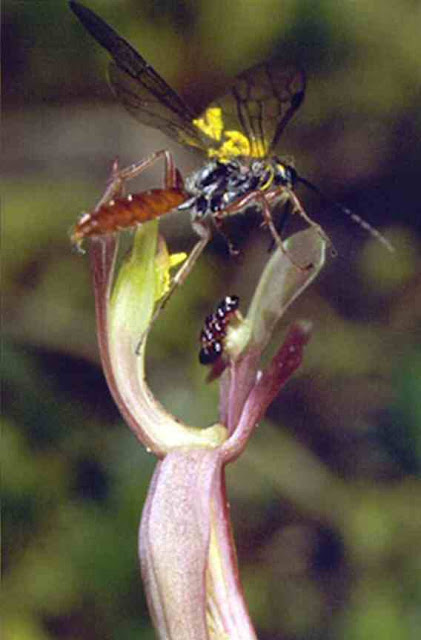Size matters when it comes to sex. When in the orchid world it does anyway! The plants rely on wasps for fertilization. Apparently, male wasps are attracted to the largest orchids. Shape of plants also has a role.
Orchids are a replica of female wasps, in shape and scent. Two orchids who had two kinds of wasps enamored with them were observed. The wasps did visited both types of plants but they spent more time "copulating' with their favored orchid.
Scent is offered to male wasps on little black beads. This only attracts males to the flowers. Once there, shape and size of blooms affects whether wasps stay or go. Orchids also benefits from this because plants with larger flowers are fertilized and they produce the next generation of orchids.
◆ Chemistry by Ty Buchanan ◆
●









